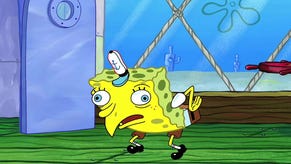5 best budget Modern decks in Magic: The Gathering
Low cost, high power.
Getting into any of the older formats in Magic: The Gathering is an exciting prospect. A lot of people will choose Modern as their first foray away from Standard because it’s a bit more accessible than formats built on the back of the Reserved List. However, it can also cost a rather frightening amount of money just to put a deck together. Thankfully, there are people out there who not only build cheaper Modern decks, but also do very well with them and even help shape the format itself.
As ever, a little definition goes a long way. So, what exactly is a budget Modern deck? Well, it’s a Modern deck that costs under $300. As for "best", that’s where things get tricky. We’ve gone with the decks that have been a part of the meta in Modern over the last few months according to MTGGoldfish, which collects an awful lot of data and does a lot of good work tracking the finance side of things too. There are only three decks here that meet these criteria though, so we’ve also taken a couple of our favourite decklists from the Modern on a Budget series over at TCGplayer by Emma Partlow.
Best budget Modern decks
- Obosh Aggro: Always the odd one out.
- Single Symbol Aggro: Nothing too complicated.
- Izzet Gifts Storm: Apologise to your opponent before going off.
- Elves: The boys are back in town.
- Mono-Black Death’s Shadow: Stop hitting myself?
Now that we’ve laid out what qualifies, we can dive into the list itself. Due to the nature of MTG, a lot of budget decks tend to be built around more aggressive strategies. This is because the cards that make up both midrange and control decks tend to be a little bit more expensive, and those decks also tend to include more fetch lands - all of which increase the cost of a deck substantially. So, now that we’re all on the same page, here’s our list of the best budget Modern decks.
1. Obosh Aggro
Always the odd one out
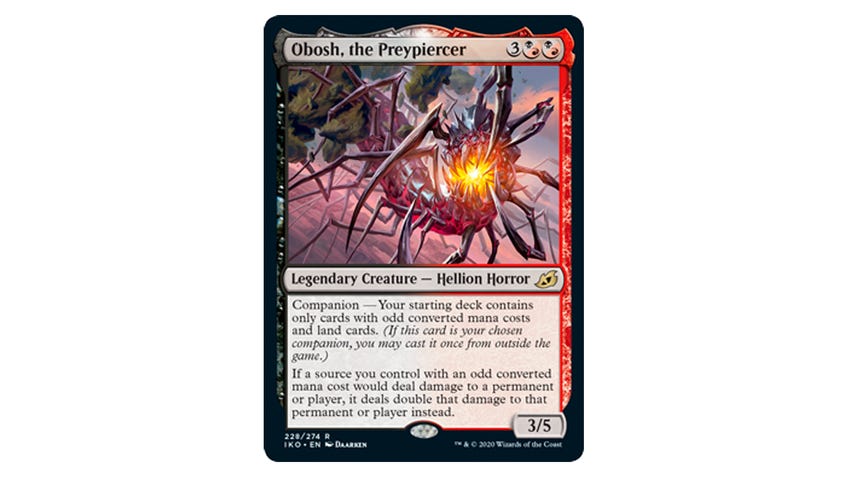
Say what you will about the Companion mechanic, but it sure did give us some interesting cards. The namesake of this deck isn’t essential to securing victory; it’s more like a final nail in the coffin. In order to use Obosh properly, each card in the deck has to have an odd mana cost. That might sound like a big restriction, but in an aggro deck, you want to have a wealth of one-mana cards to deploy anyway, so you can actually use this to your advantage.
The aim of the deck is incredibly simple: you play a lot of cheap creatures and use their Prowess triggers to make them much bigger and then hit your opponent, while also flinging fire and Lightning Bolts at their face. Prowess, for those not in the know, is an ability that triggers whenever you cast a noncreature spell, and gives the creature +1/+1 until the end of the turn.
If all goes well, you’ll have done this enough times to have wiped your opponent out before they can react. The kicker comes in if you do end up casting Obosh, the Preypiercer. While Obosh is in play, any source you control with an odd mana cost deals double damage. That means that your humble Lightning Bolt does six damage instead of three, and you basically get double the Prowess triggers as well. It’s an explosive deck in Modern, and possibly the best one on this list.
Obosh Aggro card list on MTGGoldfish
2. Single Symbol Aggro
Nothing too complicated

Another Red deck, but this one utilises a different strategy to the Obosh deck. You’re still trying to reduce your opponents to ashes, but in a different way. This one uses Jegantha, the Wellspring, who is another companion card. However, Jegantha’s stipulation is that all of the cards can only have one of any mana symbol in their casting cost. That means every card in this deck only has one Red mana symbol in it, along with whatever generic mana it costs.
Again, this deck is very much around hitting your opponent hard and fast with a mix of spells and creatures, but this one is slightly less about Prowess and a little more about card draw. There are two creatures that really help facilitate that. The first is Abbot of Keral Keep, which exiles the top card of your library as it enters and allows you to play it until the end of the turn. The other is Bomat Courier, who exiles a card each turn and can then be sacrificed to draw each card it’s collected.
These two cards help to offset one of the biggest issues of aggro decks: card advantage. By being able to draw more cards you’re able to keep the pressure on a bit more; while it’s not as focused as some decks because of this, it can often outlast other aggro decks.
Single Symbol Aggro card list on MTGGoldfish
3. Izzet Gifts Storm
Apologise to your opponent before going off
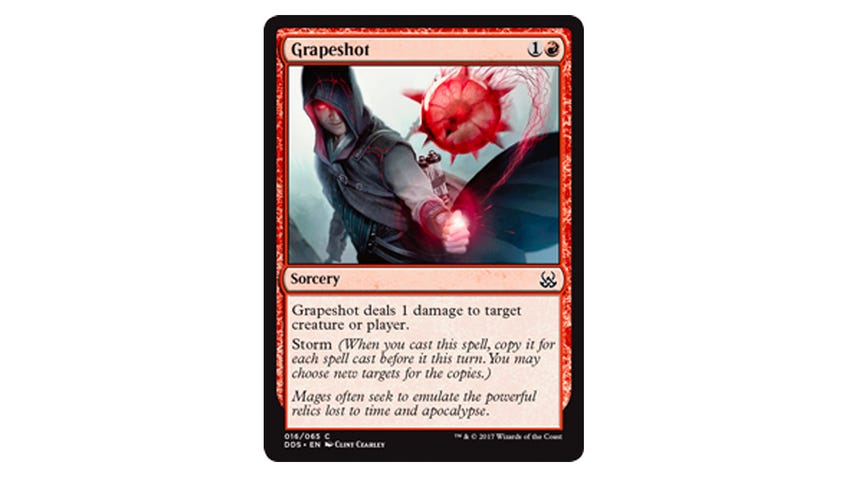
This is probably the largest exception to the aggro theme amongst these decks. This is actually a combo deck, and that means it plays in a rather unique way. If you’re new to Modern, this is going to sound like a lot of work - and it kind of is - but for some players, this is all they want to do in MTG.
The aim of the deck is quite simple: you want to cast as many spells in a single turn as you can and then use a card called Grapeshot to kill your opponent. Grapeshot has the Storm keyword, which allows you to copy it for each spell you’ve cast that turn. The card itself can do one damage to a creature or player, but you’ll nearly always aim it at the player.
The general play pattern is going to involve generating mana with spells, drawing more cards with spells and then potentially using a card called Gifts Ungiven to put both Grapeshot and Past in Flames either in your hand in the graveyard, at which point you’ve basically won the game. It’s not fun for your opponent, but that’s not really the point.
Single Symbol Aggro card list on MTGGoldfish
4. Elves
The boys are back in town
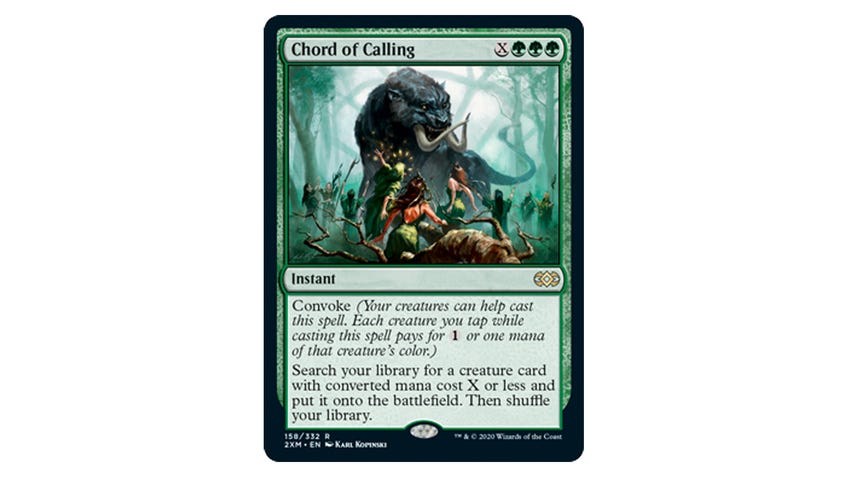
While the Red decks on this list tend to focus on using spells to deal damage, this mono-Green deck does things a little bit differently. Your main aim is to flood the board with as many creatures as you can before making them all hench (Magic: The Gym-ening) and hitting your opponent square in the face with a squad of absolute units.
There are a few different versions of the deck, but each of them has the same idea: play lots of elves, make them big, turn them sideways, win. The thing that makes these decks so powerful comes in the form of cards like Chord of Calling and Collected Company. Both of these cards help you find the pieces you need to really overwhelm the other player, and they allow for a lot of flexibility, too.
Chord of Calling is especially important, as it lets you search your entire deck for a single creature card. That means you can often get away with only having one copy of a card in your deck and have it suited to answer specific threats. It’s a resilient strategy as a result - you can have a lot of fun with it.
5. Mono-Black Death’s Shadow
Stop hitting myself?
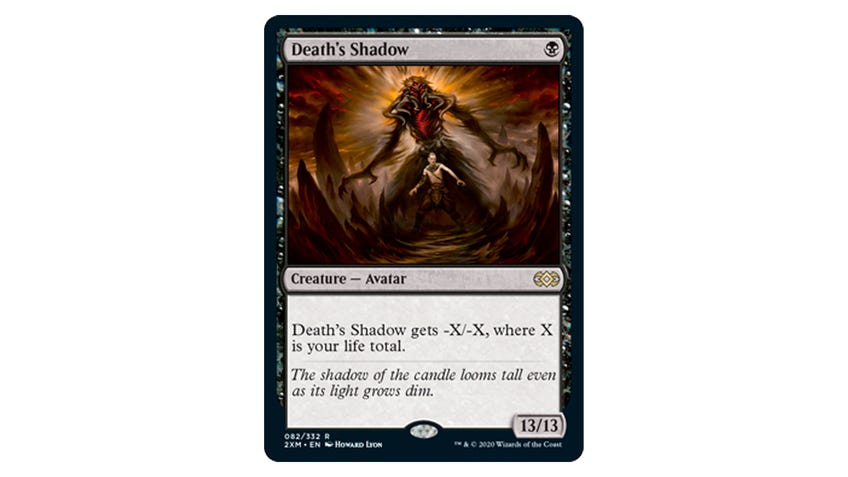
Finally, we have a mono-Black deck. Death’s Shadow is a card that has been around in Modern for a long time, but its power level fluctuates depending on which cards can support it. As it stands, it’s one of the most powerful one-mana spells in the format, but you’ll need to build around it to get the most out of it.
Death’s Shadow costs a single Black mana but has a power and toughness of 13. However, it gets -X power and toughness where X is your life total. That means you need to lower your life total to be able to get the most out of it, making it a very risky card to play.
As ever, there are a lot of ways you can build this deck, but the budget version is powerful because it can often take people by surprise. You may think you know what kind of a deck is going to use Death’s Shadow, but when somebody drops a 5/5 on turn three there’s very little you can do about it.






